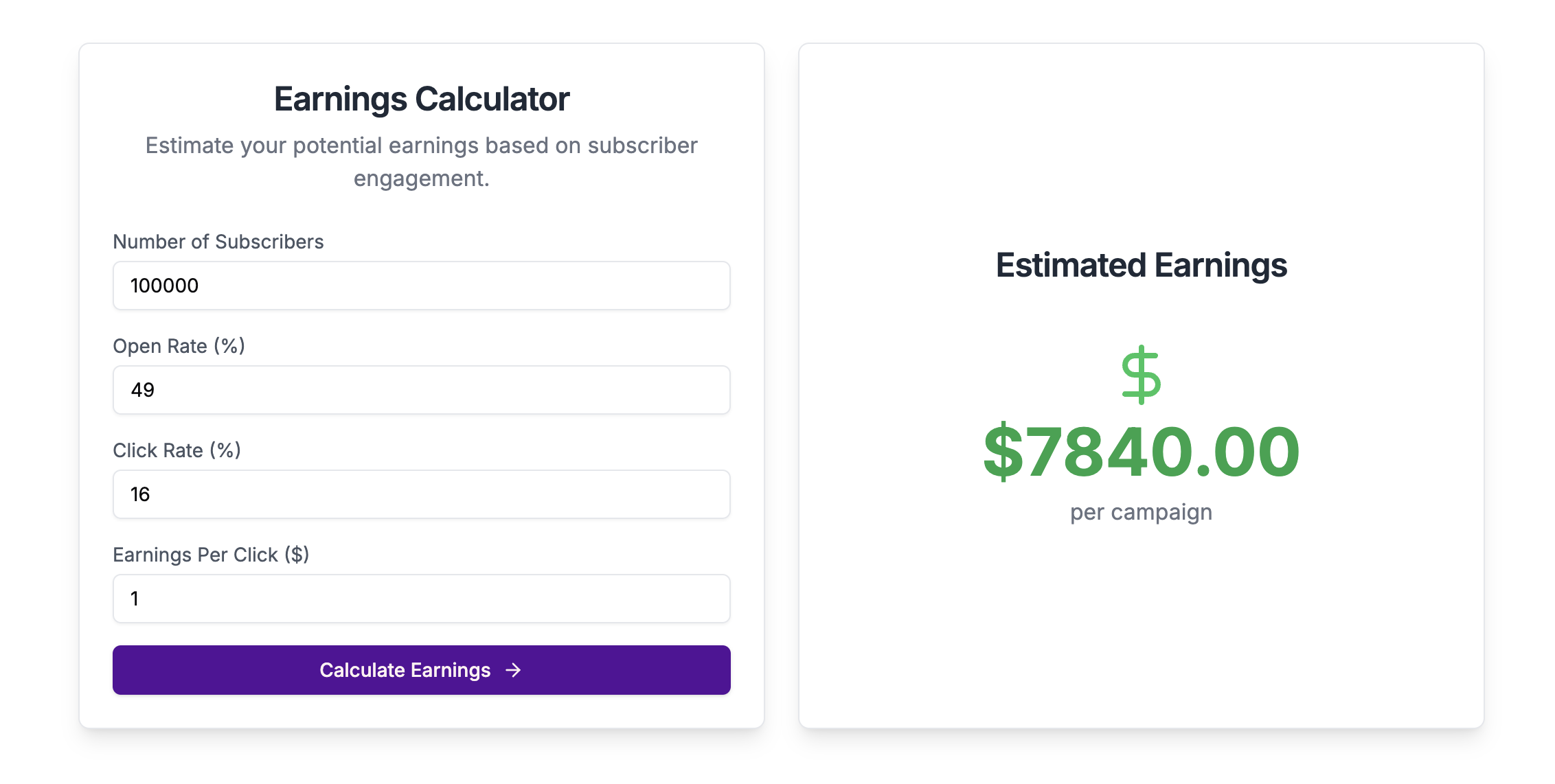
In today's digital landscape, newsletters have evolved from simple communication tools to powerful revenue-generating platforms. Whether you're an independent creator or a business, understanding how to monetize a newsletter can transform your content into a sustainable income stream. This guide explores various monetization strategies, subscriber benchmarks, pricing models, and legal considerations to help you effectively monetize your newsletter.
According to research from Metia, newsletters have seen a notable surge in popularity. From 2022 to 2023, there was a 28.2% increase in conversations around newsletters as a marketing tool. This trend is projected to peak in 2023, with an estimated 64.9% increase in the volume of discussions about newsletters. This growth indicates a significant opportunity for creators and businesses alike, as more marketers and readers are drawn to the value and reach of newsletters (Metia Research).
Absolutely. Newsletters offer multiple monetization avenues, including:
- Paid Subscriptions: Charging readers a recurring fee for exclusive content.
- Sponsorships and Advertisements: Partnering with brands to feature sponsored content or ads.
- Affiliate Marketing: Promoting products or services and earning commissions on sales generated through your referral links.
- Merchandise and Product Sales: Selling branded merchandise or related products directly to your audience.
With the right approach, newsletters can generate consistent revenue, allowing creators to focus on delivering quality content without relying solely on traditional advertising models.
The number of subscribers required to generate income varies based on factors such as revenue model, audience engagement, and pricing strategy. Consider the following:
- Revenue Model: Paid subscription models may require fewer subscribers compared to ad-supported models, as each subscriber contributes directly to revenue.
- Subscriber Engagement: Highly engaged audiences are more likely to convert, enabling monetization with a smaller subscriber base.
- Pricing Strategy: Higher subscription fees can lead to profitability with fewer subscribers.
For instance, niche B2B newsletters often have a Subscriber Lifetime Value (SLV) ranging from $15 to $25 per subscriber, while broad-appeal newsletters may have an SLV between $8 and $15 per subscriber (sparkloop.app). This indicates that with strong engagement and premium content, some creators successfully monetize with as few as 500 subscribers.
Earning potential from a newsletter can vary widely depending on factors like audience size, engagement level, pricing strategy, and revenue sources. Here’s an overview based on data from popular newsletters and industry sources.
-
The Hustle: According to Axios, The Hustle’s daily business newsletter was acquired by HubSpot for approximately $27 million, driven by a subscriber base of over 1.5 million readers. While this is an extreme example, it demonstrates the high value of a loyal, engaged subscriber list.
-
The Skimm: With a subscriber base of around 7 million, The Skimm generates substantial revenue through brand partnerships and sponsorships, reportedly earning between $20 and $30 million annually (The Atlantic).
-
Substack Creators: According to Substack’s own statistics, its top creators make over $100,000 annually, with some reaching even higher earnings (Substack Blog).
- Small Newsletters (1,000 - 5,000 Subscribers): Many newsletters in this range earn anywhere from $500 to $2,000 per month through a combination of paid subscriptions, affiliate marketing, and sponsorships.
- Medium Newsletters (5,000 - 50,000 Subscribers): Newsletters with a moderate subscriber base often earn between $2,000 and $10,000 per month. This can increase with high-value sponsorships, especially in niche industries where readers are highly engaged.
- Large Newsletters (50,000+ Subscribers): Large newsletters with a substantial following can bring in anywhere from $10,000 to $100,000 per month or more, especially when using paid subscriptions, brand partnerships, and premium content offerings.
- Paid Subscriptions: Paid subscriptions typically range from $5 to $15 monthly per subscriber. With 1,000 paid subscribers, you could potentially earn $5,000 to $15,000 monthly.
- Sponsorships and Ads: Sponsored content can earn newsletters anywhere from $50 to $500 per ad placement, depending on the audience size and industry.
- Affiliate Marketing: Many newsletters earn around $1,000 to $3,000 monthly through affiliate marketing, especially if they promote high-ticket products that resonate with their audience.
Note: With consistent effort, high-quality content, and an engaged audience, newsletters with 1,000 to 5,000 subscribers can earn between $500 to $2,000 per month, while larger newsletters with 50,000+ subscribers may reach $100,000+ monthly revenue. Monetizing through diverse channels like paid subscriptions, sponsorships, and affiliate marketing can significantly boost earnings.
Launching a paid newsletter involves several key steps:
- Choose a Platform: Platforms like Substack, Ghost, or Revue offer integrated payment processing and distribution services.
- Define Your Niche and Value Proposition: Identify the unique insights or expertise you offer to justify a subscription fee.
- Set a Pricing Model: Determine a fair monthly or annual rate. Many paid newsletters charge between $5 to $15 per month, with premium newsletters charging higher fees (kit.com).
- Publish Consistently: Establish a regular publishing schedule to meet subscriber expectations.
- Promote Your Newsletter: Utilize social media, blogs, and other channels to attract and retain subscribers.
By delivering consistent, high-quality content, you can build a loyal subscriber base willing to pay for your insights.
Substack is a popular platform for paid newsletters, offering tools to publish free and paid content. To monetize your Substack newsletter:
- Set Up Paid Subscriptions: Create both free and paid tiers, allowing you to grow your audience with free content while offering exclusive insights to paying subscribers.
- Engage Your Audience: Foster a sense of community by responding to comments and encouraging feedback.
- Offer Premium Content: Provide additional posts, in-depth analyses, or Q&A sessions for paid subscribers to enhance the value of your newsletter.
By leveraging Substack's features, you can effectively monetize your content and build a sustainable revenue stream.
Curious about how much you can specifically earn from your newsletter? Use our Newsletter Earnings Calculator to estimate your potential monthly revenue based on your subscriber count, revenue models, and engagement level. This tool will help you understand how different strategies—such as paid subscriptions, sponsorships, and affiliate marketing—can impact your earnings.
By inputting your data, you'll get a clearer picture of the financial opportunities available for your newsletter. Whether you're just starting or have an established audience, calculating your potential earnings can guide your monetization strategy and help you set realistic income goals.

If you prefer to keep your newsletter free but still want to generate revenue, consider these strategies:
- Sponsorships and Advertisements: Partner with brands relevant to your audience to include sponsored content or ads in your newsletter.
- Affiliate Marketing: Recommend products or services that align with your audience's interests and earn commissions on sales made through your affiliate links.
- Merchandise and Product Sales: Sell branded merchandise, digital products, or services directly to your readers.
A free newsletter with a large and engaged readership can be just as profitable as a paid newsletter by leveraging these monetization methods.
Pricing your newsletter depends on factors such as niche, audience, and content quality. General pricing ranges include:
- Basic Paid Subscriptions: Many newsletters charge around $5 to $10 per month.
- Premium Content: Specialized or in-depth content can command prices ranging from $15 to $50 per month.
- Annual Discounts: Offering a discount for annual subscriptions can incentivize long-term commitments.
Researching competitors and understanding your audience's willingness to pay will help you set a fair and profitable price point.
Yes, newsletters are considered original works and are protected under copyright law. This protection grants you exclusive rights to reproduce, distribute, and adapt your content. However, if your newsletter includes third-party content, ensure you have the necessary permissions, as this may affect your ability to claim copyright over the entire publication.
As newsletters grow, they can become valuable assets that may attract potential buyers. Media companies and individual investors often seek established newsletters with engaged audiences. Before selling, ensure your subscriber list complies with data privacy laws, as this will impact the transferability of your audience to a new owner.
Monetizing a newsletter involves selecting the right strategy, understanding your audience, and consistently delivering valuable content. Whether through paid subscriptions, sponsorships, affiliate marketing, or product sales, there are multiple paths to generating revenue. Start by experimenting with different methods, analyze the results, and refine your approach to find the most effective monetization strategy for your unique audience.